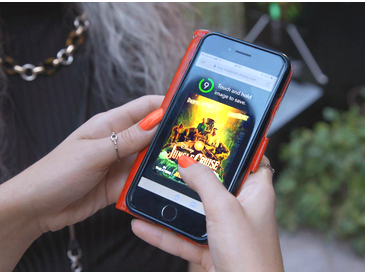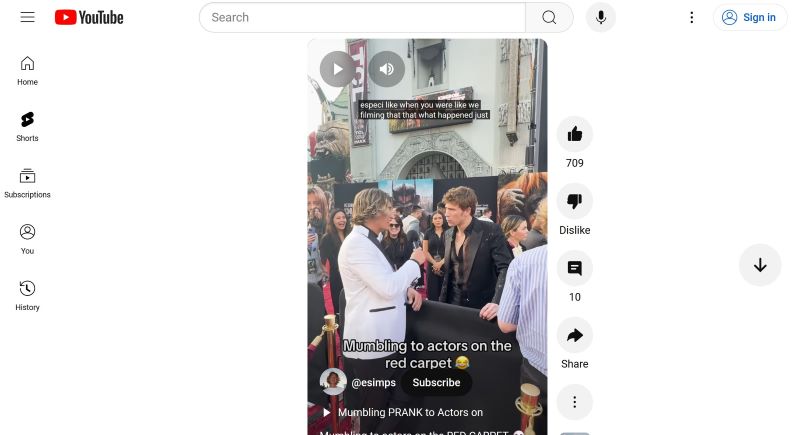Hollywood publicists invite fringe influencers to premieres and other PR events, apparently to tap their digital media followers who don’t frequent traditional media. There is a debate about the value of bringing unconventional media personalities inside the film-marketing tent.
For example, in May, Disney’s 20th Century Fox picked up travel expenses for influencer Easton Simpson to work the red-carpet premiere in Los Angeles of “Kingdom of the Planet of the Apes.” Simpson’s signature schtick is to mumble questions midway through interviews in a prank that many find cringe-worthy (screen-grab picture above Simpson at left interviewing “Apes” star Owen Teague).
When Simpson did snag talent entering the Apes” premiere, “the videos quickly blew up — more than 25 million combined views on Instagram and more than 30 million on TikTok,” wrote Chris Gardner and Kirsten Chuba in the Hollywood Reporter trade publication. Simpson says in that story that the studio ushered talent his way knowing his technique and the studio was happy with the result.
Simpson has about 39,500 YouTube subscribers today with 158 posted videos, and his nickname is “the mumble kid.” Still, his mumbling antic gets tiring with repetition and can be viewed as a One Trick Pony.
This and other such publicity gimmicks with unusual influencers give films media “reach” by connecting with audiences not corralled by traditional marketing campaigns. Those demographics are the youth audience of digital natives along with any special interest focus of the influencer, whether cars, politics, Hollywood or whatever.

On reach, consider that the “Super Bowl” football championship is TV’s biggest show that annually connects with up-to 123 million viewers in the U.S.; but that means about 210 million other Americans do not watch.
The bid for reach with goofy influencers sparks a debate in film marketing circles, writes Josh Silverstein on Clutchpoints.com: “Movie critics large and small are weighing in on the optics of the scene. Many feel that Simpson’s bit was obnoxious and a difficult to obtain press credential was wasted on a non-professional film critic. Others defended the influencer, feeling that he broke up the predictable, monotonous questions usually asked during these events.”
Film historian David Lee writes in a sarcastic post that associating with gimmicky influencers degrades a movie in the mind of the public.
Some influencers are respected by eschewing gimmicks and providing positive coverage of movies. Examples are Amanda Castrillo, Caprice Cole, Reece Feldman, Chris Olsen, Chris Stuckmann and Khleo Thomas, who are youthful influencers generating engaging and upbeat coverage on films.
They sometimes work in cooperation with movie publicity departments getting expenses paid or even fees typically in the thousands or low tens-of-thousands of dollars for each post. An interesting characteristic of this wave is they come from all over the U.S., and not just the handful of big-cities that where the media business is traditionally centered.
Influencers whether weird or normal are a new type of journalist, sometimes referred to a vloggers (a contraction of video bloggers) or creators. They are untethered to a big media employer because they work out of their personal branded hovels on TikTok, Instagram and the like.
Those influencers on the payroll of film companies also face regulatory scrutiny when not disclosing their allegiances to the public. The Federal Trade Commission sets endorsement guidelines and has busted some influencers for being misleading.
Some think that Hollywood film marketers are embracing influencers in questionable alliances simply to jump on the trend to digital media.
Related content:

Leave a Reply